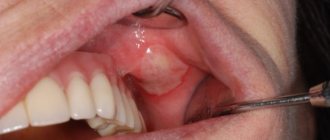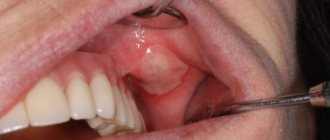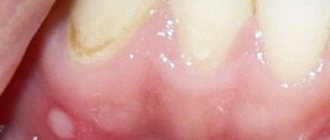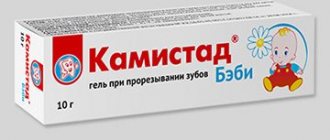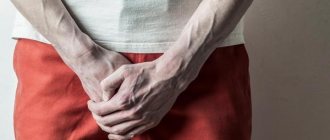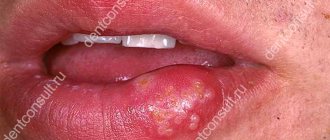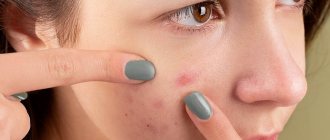Trophic ulcers are a complication of varicose veins, which is why they are sometimes called varicose veins. Occurs in eight out of ten patients with chronic venous insufficiency of the extremities. In terms of the general population, every thousand people suffer from ulcers due to varicose veins on the legs. In Moscow, with a population of 12.5 million people, at least 12,000 residents have varicose ulcers (the same number of residents in Suzdal).
Once a trophic ulcer occurs, it constantly progresses and without proper treatment leads to a persistent decrease in living comfort. In advanced cases, it can lead to disability and loss of limb.
Causes of formation of varicose ulcers
The main reason for the formation of ulcers on the legs with varicose veins is a violation of the trophism (nutrition) of tissues. The veins cannot cope with their work and expand under the influence of excess blood pressure. Blood stagnates, tissues do not receive oxygen and nutrients. Gradually, the process spreads, nerve fibers atrophy, and sensitivity is impaired.
Trophic ulcers in varicose veins are divided into primary (true) and secondary. True ones form on the wall of the dilated vein. The triggering factor is the rupture of a varicose vein and a violation of the integrity of the skin.
Secondary ones arise above the affected vein, where tissue trophism is significantly impaired. Any damage to the legs can trigger a dangerous process - an abrasion, scratch, chafing, bruise or scratch.
The situation can be aggravated by a sedentary lifestyle, prolonged sitting, working on your feet, frequent hypothermia of the feet, heavy lifting and even smoking. Complications can also arise from wearing tight or narrow shoes.
Types of scars
Postoperative scars are a consequence of intensive growth of connective tissue in the area of skin damage. They can have different shades, sizes and shapes. The following types of scars after surgery are distinguished:
- Normotrophic. Does not protrude above the surface of the epidermis and does not differ from the skin in color.
- Atrophic. It looks like a small depression. Appears when there is insufficient amount of collagen.
- Hypertrophic. Protrudes above the surface of the skin and has a pink tint.
- Keloid. It has the shape of an elevation and a bluish tint. The skin in the affected area is tight, dry, and may peel. Often the patient is bothered by itching. Over time, keloid scars increase in size.
Scar removal after surgery is an optional procedure. If the scar is small, pale and located on an area of the body that can be easily hidden with clothing, you can refuse the procedure. If the scar causes discomfort and is noticeable to others, it is better not to wait, but to immediately contact a surgeon or cosmetologist.
Stages of development of ulcers with varicose veins
Varicose ulcers of the extremities develop gradually. First, the skin over the varicose vein changes color to intense pink, and then purplish-red. Later, the skin becomes shiny, smooth, thin and dry, and begins to itch and flake. Microcracks appear, which soon transform into erosion. Without treatment, they progress, growing in depth and breadth, gradually capturing subcutaneous fat, muscles, tendons and even the periosteum. Ulcers with varicose veins on the legs look scary and are prone to suppuration. The developing infectious process aggravates the patient's condition.
Get an online consultation
right now.
Get
Pre-ulcerative stage of varicose veins . With intact skin, a place with reduced sensitivity is detected. The area of skin over varicose veins reacts little to pain, cold or heat, pressure and injections. At the same time, tingling and twitching sensations (convulsions) periodically appear in the area of the legs and feet. A little later, part of the skin of the leg, where the varicose veins are, becomes smooth and shiny. This is caused by further trophic disorders, swelling of the subcutaneous adipose tissue. As the veins continue to dilate, the pressure increases, the skin, experiencing strong tension, stretches and becomes thinner. The affected area first turns pale, then becomes bluish, and then turns red. The patient experiences burning and itching. On a red background, you can see dark dots (exudate sweating) and necrotic pale spots.
Stage of formation of trophic ulcers . In place of whitened spots and microtraumas, ulcers are formed - round-shaped erosions with a tendency to spread. They “grow” both in depth and in breadth. They can unite and merge into a common wound surface. There is a high risk of bacterial infection.
Purification stage . Ulcers on the legs deepen and take on a characteristic shape with jagged edges. The skin around them rises due to swelling, becomes bright purple, and peels off. A bloody exudate with an unpleasant odor is released from the wound surface. If an infection occurs, the discharge becomes purulent and can be very copious. Sometimes additional defects appear nearby - the trophic ulcer spreads, affecting neighboring areas.
Necrotic stage . The process is progressing. The ulcers merge into one necrotic, smelly wound. The infection spreads and general intoxication occurs. Body temperature rises to 39ºС, headache, chills occur, lethargy and weakness increase. Necrosis involves muscles and bones. The person experiences severe pain. There is a high probability of developing wet gangrene, which almost always ends in amputation of the limb. Otherwise, the patient faces death.
Complications arise from untimely medical care, in advanced cases. These include:
- gangrene - tissue necrosis that spreads quickly,
- sepsis - "blood poisoning"
- thromboembolism - the formation of a blood clot in the affected vein and its separation with drift into the vessels of the heart, lungs or brain.
All these complications of varicose veins are deadly. They can be avoided by consulting a doctor in time, identifying the disease and undergoing a full course of treatment.
Optimal environment for healing
As the wound is cleansed, the degree of exudation decreases, tissue swelling decreases, redness and pain go away.
At this point, it is important to create a favorable environment that will stimulate the growth of granulations and epithelium, and at the same time it is important to protect the wound from infection. For these purposes, it is necessary to use hydrocolloid dressings, for example NEOFIX Fibrocold Ag, or mesh dressings NEOFIX Fibrotul Ag, Bactigras. NEOFIX Fibrocold Ag hydrocolloid dressings have an undeniable advantage over hydrocolloid dressings from other manufacturers - the presence of an active antimicrobial component in the dressing - silver. NEOFIX Fibrocold Ag dressing should be applied to a wound with weak exudation. Hydrocolloids in the dressing absorb exudate and form a gel on the surface of the wound, which creates an optimal moist environment on the surface of the wound, while silver has a preventive and therapeutic antimicrobial effect. Wound exudate does not spill onto the surrounding skin, but is absorbed by hydrocolloids, thereby providing protection to the surrounding skin. The outer side of the dressing is a film that protects the wound from the penetration of water and bacteria from the outside. The dressing stimulates the growth of granulations and epithelium, promotes wound healing. Another advantage of the NEOFIX Fibrocold Ag hydrocolloid dressing is that there is no need for daily dressings; such a dressing can remain on the wound for up to 7 days, depending on the clinical situation.
The main property of NEOFIX Fibrotul Ag and Bactigras mesh dressings is their atraumatic nature, i.e. these dressings are replaced without consequences, unlike conventional gauze dressings, which stick to the surface of the wound and during subsequent dressings they are difficult to remove without tearing off the newly formed granulations and epithelium, so gauze dressings must be soaked before replacing. When using specialized mesh dressings NEOFIX Fibrotul Ag and Bactigras, this is not necessary, because dressings will never stick to the wound if you follow the manufacturer's instructions and the recommendations of your doctor. Mesh dressings protect the wound from drying out and help maintain an optimal moderate moist environment for wound healing
.
In addition, mesh dressings prevent the accumulation of exudate on the surface of the wound; they ensure the free passage of discharge from the wound into the absorbent dressing, which is very important, because accumulated exudate serves as a breeding ground for microorganisms, and can lead to the development of infection in the wound. The Bactigras dressing contains the antiseptic chlorhexidine acetate, and the NEOFIX Fibrotul Ag mesh dressing contains silver, the antimicrobial effect of which we discussed above. Chlorhexidine acetate also has a broad spectrum of antimicrobial action against pathogens of wound infections. These two dressings are especially important to use to prevent infection in the wound or during its initial manifestations.
Apply absorbent dressings, such as several sterile gauze dressings, over the mesh dressings, and secure the dressings with a bandage.
Gauze dressings must be changed daily. Mesh dressings can be used for a longer period - up to 7 days. Mesh dressings have proven themselves to be excellent for the treatment of wounds after autodermaplasty (skin transplantation): donor sites and for the engraftment of the transplanted skin area. The dressings are on the wound surface and do not stick to it, which means they do not injure the wound during dressings, dressings are not accompanied by bleeding and are painless. Another advantage of NEOFIX Fibrotul Ag and Bactigras mesh dressings is that the fibers of these dressings do not tear and the fibers do not remain in the wound. When using regular gauze pads, there is a danger of leaving gauze fibers in the wound, which can lead to an inflammatory reaction. Mesh bandages are very flexible, soft, and easy to apply to the surface of a wound, including wounds with complex terrain, hard-to-reach places, and complex anatomical areas such as fingers, joints, and bends. In addition to standard sizes, NEOFIX Fibrotul Ag and Bactigras dressings have even larger sizes of 15 cm x 100 cm, which is especially important for the treatment of large burn wounds. Thus, a wide variety of dressings ensures the effectiveness of treating purulent wounds both at home and in medical institutions. However, treatment of extensive purulent wounds must occur under the supervision of a physician.
Diagnosis of ulcers in varicose veins
Phlebologists deal with the problems of varicose veins. Where there are no phlebologists, surgeons help with varicose veins of the extremities. Trophic ulcers on the legs with varicose veins look so characteristic that the doctor makes the diagnosis during an examination of the patient. Additional research methods are used to clarify the stage of the disease and assess how deep the varicose ulcer is. For this purpose, angiography, venography and, in some cases, magnetic resonance imaging (MRI) are used. Clinical and biochemical blood tests allow us to assess the general condition of the body in order to plan appropriate therapy.
To fully treat trophic ulcers, the doctor collects a complete “dossier” of the disease: he specifies the time of the first signs of leg disease, what treatment methods were used and how they helped. The doctor is interested not only in the immediate location of the pathology, but also in the general condition of the body. After a thorough examination, an examination is prescribed. How wide it will be depends on many factors. After the doctor collects the necessary data, a final diagnosis will be made and a treatment plan drawn up. The doctor will discuss the target dates, when approximately the ulcers on the leg should clear and heal.
Conservative treatment
During treatment, trophic ulcers are treated with antiseptic and antibacterial agents: solutions, gels, ointments, dressings. In case of infection, antibiotics are prescribed in tablet or injection form.
After cleansing the ulcerative bottom, the trophic ulcer is treated with agents that enhance regeneration and restore trophism. To improve the tone of the veins, elastic bandaging is used. Maintenance therapy is prescribed: vitamins, venotonics, restoratives. Physiotherapy in this case is an auxiliary method that helps improve blood microcirculation and tissue nutrition. The most commonly used are laser therapy, magnetic therapy, and infrared radiation.
Treatment of bacterial skin infections
It should start from the early stages and be carried out under the supervision of a specialist. In some cases, local treatment with antibacterial ointments and wiping with antiseptics is sufficient. Widespread rashes, deep pyoderma, require the prescription of systemic antibiotics. In chronic cases, the doctor may recommend autohemotherapy and immune drugs.
Surgical treatment is carried out if the abscess does not open on its own or if a rough scar must be avoided. Laser coagulation and physiotherapy are used to restore tissue.
It is important to identify and treat concomitant diseases, eliminate adverse external effects on the skin, and select nutrition.
Surgery
For life-threatening complications of varicose veins, the presence of a large area of skin ulceration, or a deep wound, surgical treatment is used. The ulcer is cleaned mechanically using curettes (wound curettage), vacuuming or VAK therapy. In severe cases, the affected area is excised and the defect is covered with a skin graft from the patient's thigh. Sometimes additional blood vessels are inserted to not only remove the defect, but also restore blood supply. After the operation, the patient undergoes a course of rehabilitation, after which he returns to his normal life.
TCA chemical peel –
Ice pick scars can be corrected well with trichloroacetic acid (TCA) peels, but this method should be avoided in patients with dark skin due to the high risk of hyperpigmentation. Conducting a medium peel will mean a TCA concentration of 40-50% (only in this case does damage to the papillary dermis occur), and anything below 40% is only a superficial peeling to the depth of the epidermis. Accordingly, we need a TCA of at least 40%.
It should be noted that such a high concentration means certain risks. Therefore, such peeling should only be done by a very experienced dermato-cosmetologist. Below you can see the result after 3 TCA 50% peeling procedures, where the intervals between procedures were 4 weeks. As you can see, a significant improvement has been achieved, and other methods can then be used (for example, laser resurfacing, or the method of perforation removal of individual scars).
TCA chemical peel (before and after photos)
Prevention of varicose ulcers after treatment
If the goal of treatment is achieved: blood flow is restored, adequate tissue nutrition is restored and the cause of the disease is eliminated, the risk of complications is minimal. However, the patient should remember that his future fate depends on himself. You need to lead a healthy lifestyle and constantly monitor the condition of your blood vessels. For this:
- take medications prescribed by a doctor,
- eat right (exclude fast food, alcohol, animal fats and simple carbohydrates),
- avoid excessive physical activity,
- perform a complex of physical therapy,
- wear compression stockings on the lower extremities,
- choose comfortable shoes,
- come regularly for medical examinations (twice a year),
- undergo specialized sanatorium-resort treatment.
Compliance with the doctor-prescribed regimen, nutrition and physical activity will help avoid relapse of a trophic ulcer. By contacting the A. Begma Medical Center regarding varicose veins, you can get a detailed consultation with a phlebologist, clarify the condition of the veins, get rid of trophic ulcers and make sure they never bother you.
